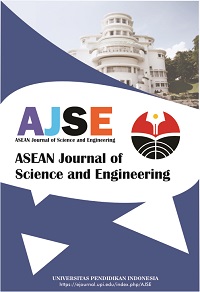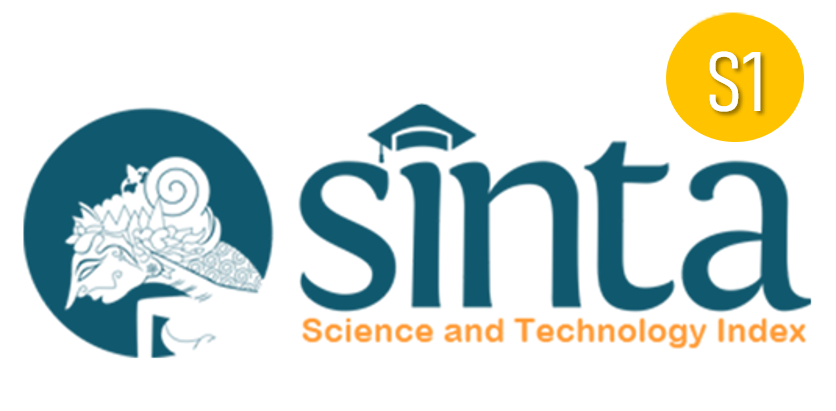Smart Electric Resistance Welding based on Artificial Intelligence (AI) based on Real-Time Adaptive Statistical Features Completed with Bibliometric Analysis
Abstract
Keywords
Full Text:
PDFReferences
Kesse, M. A., Buah, E., Handroos, H., and Ayetor, G. K. (2020). Development of an artificial intelligence powered TIG welding algorithm for the prediction of bead geometry for TIG welding processes using hybrid deep learning. Metals, 10(4), 451.
Wang, H. F., Cao, J., Zhao, X. M., Wang, X. M., and Wang, G. P. (2017). Detection of HF-ERW status by neural network on imaging. International Journal of Precision Engineering and Manufacturing, 18, 931-936.
Cai, W., Wang, J., Jiang, P., Cao, L., Mi, G., and Zhou, Q. (2020). Application of sensing techniques and artificial intelligence-based methods to laser welding real-time monitoring: A critical review of recent literature. Journal of Manufacturing systems, 57, 1-18.
Li, Y., Yu, B., Wang, B., Lee, T. H., and Banu, M. (2020). Online quality inspection of ultrasonic composite welding by combining artificial intelligence technologies with welding process signatures. Materials & Design, 194, 108912.
Wang, B., Hu, S. J., Sun, L., and Freiheit, T. (2020). Intelligent welding system technologies: State-of-the-art review and perspectives. Journal of Manufacturing Systems, 56, 373-391.
Tsuzuki, R. (2022). Development of automation and artificial intelligence technology for welding and inspection process in aircraft industry. Welding in the World, 66(1), 105-116.
Kim, D., Kim, T., Park, Y. W., Sung, K., Kang, M., and Kim, C. (2007). Estimation of weld quality in high-frequency electric resistance welding with image processing. Welding Journal, 86(3), 70-80.
Hasegawa, N., Fukami, T., Takeda, Y., Tanimoto, M., Hmatani, H., Nakaji, T., and Ohsawa, T. (2015). Development of a new optical monitoring system for HF-ERW welding processes. Nippon Steel & Sumitomo Metal Technical Report, (107), 114-120.
Janssens, O., Van de Walle, R., Loccufier, M., and Van Hoecke, S. (2017). Deep learning for infrared thermal image based machine health monitoring. IEEE/ASME Transactions on Mechatronics, 23(1), 151-159.
Cheng, J., Cao, J., Zhao, J., Liu, J., Zhao, R., and Liu, S. (2020). The flower pattern and rolls design for ERW pipes with the different specification in the flexible roll forming process. Thin-Walled Structures, 154, 106809.
Anijdan, S. M., Aghaie-Khafri, M., Khoshakhlagh, A. R., Eivani, A. R., Park, N., and Jafarian, H. R. (2021). A significant toughness enhancement, and microstructural evolution of an electric resistance welded (ERW) microalloyed steel. Journal of Materials Research and Technology, 15, 5776-5786.
Lee, J., Kim, D., Quagliato, L., Kang, S., and Kim, N. (2017). Change of the yield stress in roll formed ERW pipes considering the Bauschinger effect. Journal of Materials Processing Technology, 244, 304-313.
Khalaj, G., Pouraliakbar, H., Jandaghi, M. R., and Gholami, A. (2017). Microalloyed steel welds by HF-ERW technique: Novel PWHT cycles, microstructure evolution and mechanical properties enhancement. International Journal of Pressure Vessels and Piping, 152, 15-26.
Karani, A., Koley, S., and Shome, M. (2019). Failure of electric resistance welded API pipes–Effect of centre line segregation. Engineering Failure Analysis, 96, 289-297.
Warfield, S. K., Kaus, M., Jolesz, F. A., and Kikinis, R. (2000). Adaptive, template moderated, spatially varying statistical classification. Medical Image Analysis, 4(1), 43-55.
Mutlag, W. K., Ali, S. K., Aydam, Z. M., and Taher, B. H. (2020). Feature extraction methods: a review. In Journal of Physics: Conference Series, 1591(1), 012028.
Kang, C., Shi, C., Liu, Z., Liu, Z., Jiang, X., Chen, S., and Ma, C. (2020). Research on the optimization of welding parameters in high-frequency induction welding pipeline. Journal of manufacturing processes, 59, 772-790.
Ravikiran, K., Xu, P., and Li, L. (2024). A critical review on high-frequency electric-resistance welding of steel linepipe. Journal of Manufacturing Processes, 124, 753-777.
Rr, M. (2016). Microstructural changes in the forge weld area during high-frequency electric resistance welding. Machines Technologies Materials, 10(5), 23-26.
Cioffi, R., Travaglioni, M., Piscitelli, G., Petrillo, A., and De Felice, F. (2020). Artificial intelligence and machine learning applications in smart production: Progress, trends, and directions. Sustainability, 12(2), 492.
Mou, X. (2019). Artificial intelligence: Investment trends and selected industry uses. International Finance Corporation, 8(2), 311-320.
Nagaraju, K., and Ramakrishna, S. (2024). Leveraging artificial intelligence (AI) and geospatial technologies for community-centered urban expansion forecasting in hyderabad. ASEAN Journal of Community Service and Education, 3(2), 135-146.
Nurhasanah, S., and Nugraha, M. S. (2024). The future of learning: Ethical and philosophical implications of artificial intelligence (AI) integration in education. Indonesian Journal of Multidiciplinary Research, 4(2), 341-352.
Zahid, A., Leclaire, P., Hammadi, L., Roberta, C. A., and El Ballouti, A. (2025). Exploring the potential of industry 4.0 in manufacturing and supply chain systems: Insights and emerging trends from bibliometric analysis. Supply Chain Analytics, 100108.
Sikandar, H., Vaicondam, Y., Khan, N., Qureshi, M. I., and Ullah, A. (2021). Scientific mapping of industry 4.0 research: a bibliometric analysis. International Journal of Interactive Mobile Technologies, 15(18), 129-147.
DOI: https://doi.org/10.17509/ajse.v5i1.82231
Refbacks
- There are currently no refbacks.
Copyright (c) 2025 Universitas Pendidikan Indonesia

This work is licensed under a Creative Commons Attribution-ShareAlike 4.0 International License.












